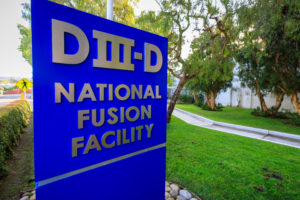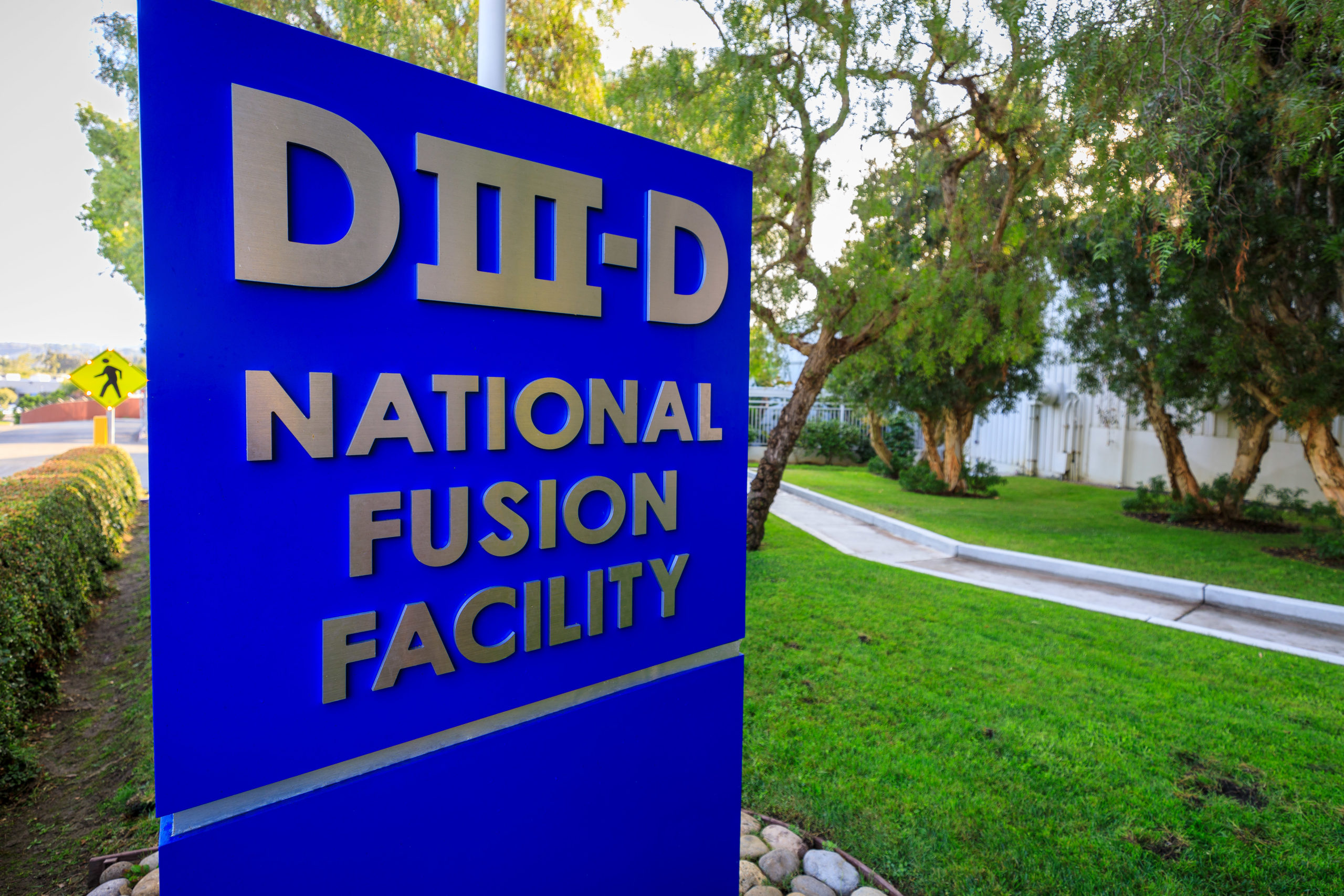Become a User
Become a User at the DIII-D National Fusion Facility
 The DIII-D National Fusion Facility invites collaboration in its program. The DIII-D team is a national and international collaboration among approximately 100 institutions. Users manage elements of the program, generate ideas and innovations, lead experiments, build and operate diagnostics and other equipment, analyze data, provide theory and modeling support, and report and publish results worldwide. Opportunities also exist for graduate and undergraduate students. In particular, the facility provides specific opportunities for PhD student run time and provides support for training and engagement.
The DIII-D National Fusion Facility invites collaboration in its program. The DIII-D team is a national and international collaboration among approximately 100 institutions. Users manage elements of the program, generate ideas and innovations, lead experiments, build and operate diagnostics and other equipment, analyze data, provide theory and modeling support, and report and publish results worldwide. Opportunities also exist for graduate and undergraduate students. In particular, the facility provides specific opportunities for PhD student run time and provides support for training and engagement.
The goal of the DIII-D program is to develop the solutions for future fusion reactors and the scientific basis to project them with confidence. This program targets the resolution of a compact fusion pilot plant concept and preparation to ensure the success of ITER. Research in 2024 will enter an exciting new chapter, with a new modular divertor that allows advanced scenario demonstration at higher triangularity and elongation, the installation of high-field-launch LHCD and 4 MW of ECH. This will permit new explorations of the Advanced Tokamak concept for steady-state fusion, alongside continued high-priority work to resolve stable high-performance discharges for ITER. An emphasis is also placed on development of innovative divertor and pedestal solutions, their underlying science, and the integration of core end edge solutions.
In this work, a strong focus is placed on developing a validated physics understanding of the foundational processes and quantitative predictive simulation capability. This benefits from a comprehensive set of high-resolution 1D, 2D and 3D diagnostics. New systems have been or will be commissioned; these include 2D Thomson scattering, ion temperature and EUV/VUV spectrometer for divertor physics; Lyman-alpha measurements of edge neutral profiles at multiple locations; helium beam for edge density profile; Doppler-free saturation spectroscopy; gamma ray imager for runaway electron physics; high-resolution bolometers; and a range of turbulence, energetic particle and profile diagnostic upgrades. A further Frontiers Science campaign is being considered, for which separate calls will be issued later.
There are many opportunities to learn the techniques of fusion and train personnel at the facility, with most staff executing support roles for their colleagues. Provision of DIII-D is a team effort, and many users provide direct year-round support and assistance to the program, with the facility providing office space, IT support, and other assistance and training.
An upcoming announcement will invite new proposals from all potential collaborators, as well as for engagement, analysis, new diagnostics or other hardware, and experiments. The FY23 experimental campaign has recently ended, and planning for the FY24 campaign is underway. See below for more information about how to be involved in the DIII-D research program.
For more information:
- DIII-D Internal Users Site (access restricted to existing program participants who have fulfilled cyber access requirements)
- Current (2019-2024) DIII-D 5-year plan
- Proposed 2024-2029 5-Year Plan (preliminary)
- Announcement on Opportunities for Collaboration on DIII-D (October 2022), includes a list of DIII-D Program contacts
- DIII-D Capabilities and Tools for Plasma Science Research
- Program Resources Provided to Users
Becoming a Participant
The DIII-D program welcomes new ideas for research, which can be submitted at any time. Experimental planning for 2024-25 will begin later this year, with a Research Opportunities Forum and an open competition for the Torkil Jensen Award for Innovative Experiments. Please contact the area leaders listed below for more detailed information.
If you would like to visit DIII-D (in-person or remote) to participate in experiments, start here:
- Discuss the proposed work with the relevant Experimental Science group leader to see how it fits within the research structure
- Plasma-Interacting Technology: Tyler Abrams and Andrew Dvorak
- Fusion Pilot Plant Research: Morgan Shafer and Chris Holcomb
- ITER Research: Xi Chen and George McKee
- Based on these discussions, the Experimental Science Directorate will identify a GA host for you
- Download (right click and select “Download Linked File”) the form that applies to you, fill it out (the forms are fillable PDFs), and return it to Fran Castilleja
- GA host will begin a dialogue with you on scope of work
- GA host will initiate cyber access and safety training
Funding Opportunity Announcements (FOAs)
There are currently no FOAs posted that target DIII-D. When one is posted, it will appear here.
Records of Discussion
This mainly applies to individuals writing proposals for funding from DOE in response to an FOA, but there are other circumstances where you may need to complete a record of discussion (ROD). The appropriate form can be downloaded here.
All applicants for funding to participate in the DIII-D research program will need to include a completed ROD with their final application (not needed for the pre-application). If you have questions about that process or need to be matched with somebody at DIII-D for that discussion, please contact Chuck Greenfield.
IMPORTANT: If you are responding to an FOA from DOE Fusion Energy Sciences, you almost certainly have a short window to complete this process. Please recognize that the program processes many ROD forms, so it is very important that you be proactive in completing your ROD in a timely manner. Please abide by the deadlines set when the FOA is issued.
The steps in the ROD process are:
- IMMEDIATELY UPON RECEIVING ENCOURAGEMENT FROM DOE: Contact Chuck Greenfield to be matched with a DIII-D Program research contact. Your discussion should begin immediately.
- After your research contact discussions, the ROD will have to be reviewed and signed by the individuals listed below. Please make sure your ROD progresses to the point of beginning each of these discussions by the indicated due dates. Failure to adhere to these dates may result in your ROD not being complete in time for proposal submission (dates will be added when the next FOA is posted):
- Step 1 (in parallel):
- Experimental Science Director: Craig Petty
- DIII-D Diagnostics Leader: Suk-Ho Hong
- Note for some types of proposals, this might be the Operations Director, George Sips
- Computer Resources responsible officer: Sterling Smith
- Step 2: DIII-D Director: Richard Buttery
Note that our role in this process is not to judge your proposal but rather to (1) help you prepare a proposal that is consistent with the capabilities and plans of the DIII-D Program and (2) to make sure we understand (and can explain to DOE) what resources your proposed work would need from the DIII-D Program.

